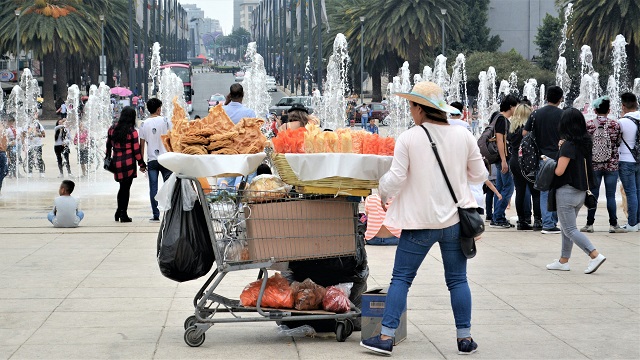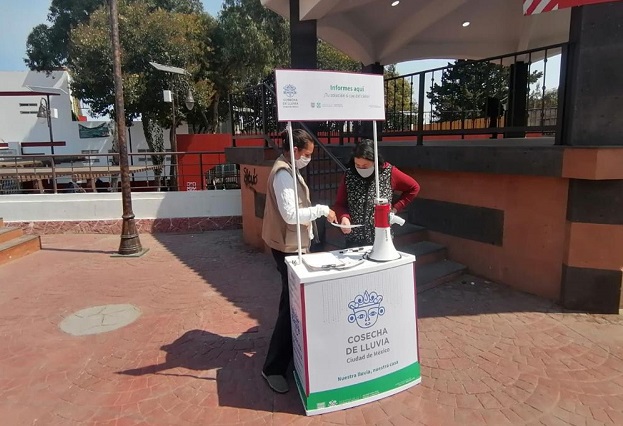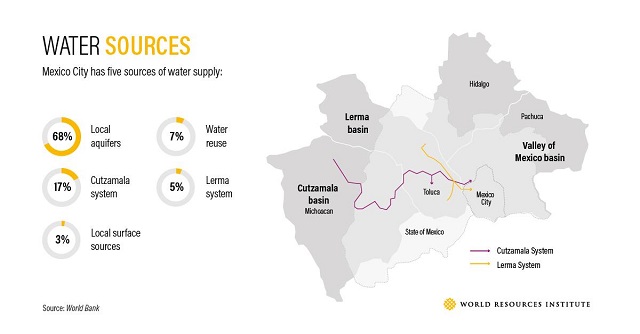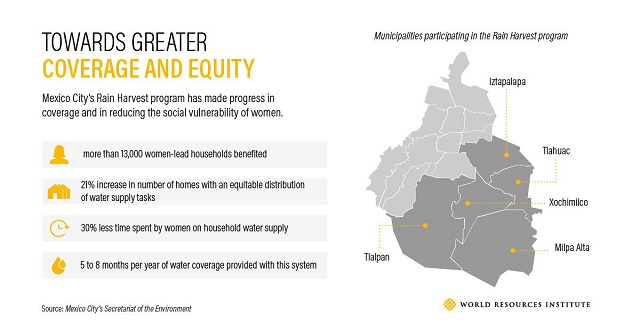
Water for human consumption is increasingly inaccessible, due to poor management, degradation of water sources, the effects of climate change and more.
Marginalized groups — such as minorities, rural communities and women — are disproportionately affected by water security issues, and women often play a key role in collecting, storing, distributing and managing water. In fact, the majority of water carriers in low- and middle-income countries are women, with a particular burden falling on girls.
In some alcaldías (municipalities) in Mexico City — which is currently in the throes of a serious drought — women can spend almost an entire working week (4.4 working days) on water-related activities. When homes do not have water tanks, women are usually responsible for obtaining water, storing it, and ensuring it is appropriately used and reused. In a country where over 50% of the population lives in areas where water is scarce, Mexico City is among the three states most at risk.
Growing evidence suggests that nature-based solutions, when designed and implemented in a participatory and inclusive way, could help make water access more equitable, and even favor the most disadvantaged and vulnerable. But unfortunately, minority groups are too often left out of planning and design processes.
One program in Mexico City seeks to strengthen water resilience by decreasing the social vulnerability of women through rainwater harvesting systems, an example of green-gray infrastructure. The program could have important lessons for other cities and countries around the world.
The Impact of Water Supply on the Gender Gap
Given the disproportionate role women already bear from housework and childcare, the addition of water management in places of low water access results in unfair sacrifices to their own personal, professional and educational development. The time women invest in unpaid work in the home is multiplied when water does not arrive in the necessary quality and quantity — either because of insufficient supply or inadequate infrastructure.
Gender inequity in managing water is not typically considered in decision-making or developing public policies. This is in part because women are underrepresented in the water, sanitation and hygiene sector, occupying only 17% of the workforce in this sector in low- and middle-income countries.
This situation could be remedied if water scarcity were less frequent and severe, if water harvesting and management were more equitable, and if the development of water projects ensured the full participation of women.

Green Infrastructure Can Help Reduce the Gender Gap
Green infrastructure includes measures to protect, restore or sustainably manage natural ecosystems to address societal challenges. It’s a solution that can strengthen urban water resilience by mitigating the effects of climate change — such as floods and heat waves, and the risks of water scarcity. Green infrastructure like restored forests or rainwater harvesting systems can complement conventional, built infrastructure like dams and water treatment plants, providing it with flexibility and adaptability, extending its lifespan, reducing maintenance costs, and even providing other co-benefits.
For example, the city of Philadelphia established a plan in 2011 to reduce the runoff that enters its combined sewer system and overflows into water bodies. To date, the city has implemented more than 2,800 green infrastructure interventions like rain gardens, green roofs and catchment cisterns that retain water, promote infiltration and reduce runoff. The project has prevented around 10.2 million cubic meters of rainwater from flowing into rivers and streams.
In addition to preventing contamination of the city’s water, green infrastructure improves the health of surrounding ecosystems and increases water security for the city and its residents.

The Case of Mexico City
Currently, 85% of the water in Mexico City comes from compromised sources. The availability of groundwater in the Cuenca del Valle de México (Valley of Mexico’s Basin) has decreased 55% in the last 10 years due to overexploitation, while the Cuenca del Cutzamala (Cutzamala Basin) is at 50% of its storage, mainly due to prolonged drought.

The scarcity of water in Mexico City most affects communities with the highest degree of marginalization. For example, Iztapalapa, the most populous area in the city, has a water supply deficit of 35%. This results in women investing between one and four hours a week hauling water to their homes.
To help mitigate this problem, in 2019 the government of Mexico City implemented the Rain Harvest program for homes in areas with the greatest water shortages. The program started in Iztapalapa and Xochimilco, and, due to its success, has since been expanded to another six areas.
The program helps install rainwater harvesting systems, which capture the rain that falls on roofs of houses. Water is stored in a cistern, which can then be used for domestic purposes. It can also be used as drinking water if given additional treatment. These systems can provide a family with water for between five to eight months of the year.
By prioritizing households headed by women, single mothers, indigenous people, older adults and people with disabilities, the program aims to improve equity across the board. To date, more than 13,000 female heads of household have benefited — comprising around 65% of installed rainwater harvesting systems.

Additionally, the training process for the operation and maintenance of the systems promotes the equal distribution of tasks between men and women. According to the Secretariat of the Environment of Mexico City’s forthcoming Climate change and care work report, the focus on gender equality in training increased the number of homes with equitable distribution of water-related tasks from 34% to 55%.
The project has also reduced the time residents spend ensuring adequate water supply for their households by 20% — 30% in households where women have sole responsibility for water supplies.
Towards Equitable Water Resilience
The challenges associated with water represent some of the most important issues we face as a society. Because responsibility for household water management and use often lies with women, solutions that seek to strengthen community water resilience must incorporate an equitable gender perspective.
Green infrastructure projects such as Mexico City’s initiative have the potential to increase resilience and serve as powerful development tools to address climate change. However, to take full advantage of their potential, cities must ensure inclusive participation in the planning, design and implementation of green infrastructure projects. When done well, communities and city residents can look forward to reduced vulnerability to climate change and a higher quality of life.
Cities4Forests is an initiative focused on helping cities better conserve, manage and restore forests. Mexico City, Philadelphia, Semarang and Kochi are participating members.
This article was originally published on WRI’s Insights.
Alejandra Bosch is a Water and Green Infrastructure Analyst at WRI México.
Eduardo Hinojosa Robles is Coordinator of Water and Green Infrastructure for the Cities program at WRI México.
John-Rob Pool is the Implementation Manager for Cities4Forests within the Natural Infrastructure Initiative at World Resources Institute.








